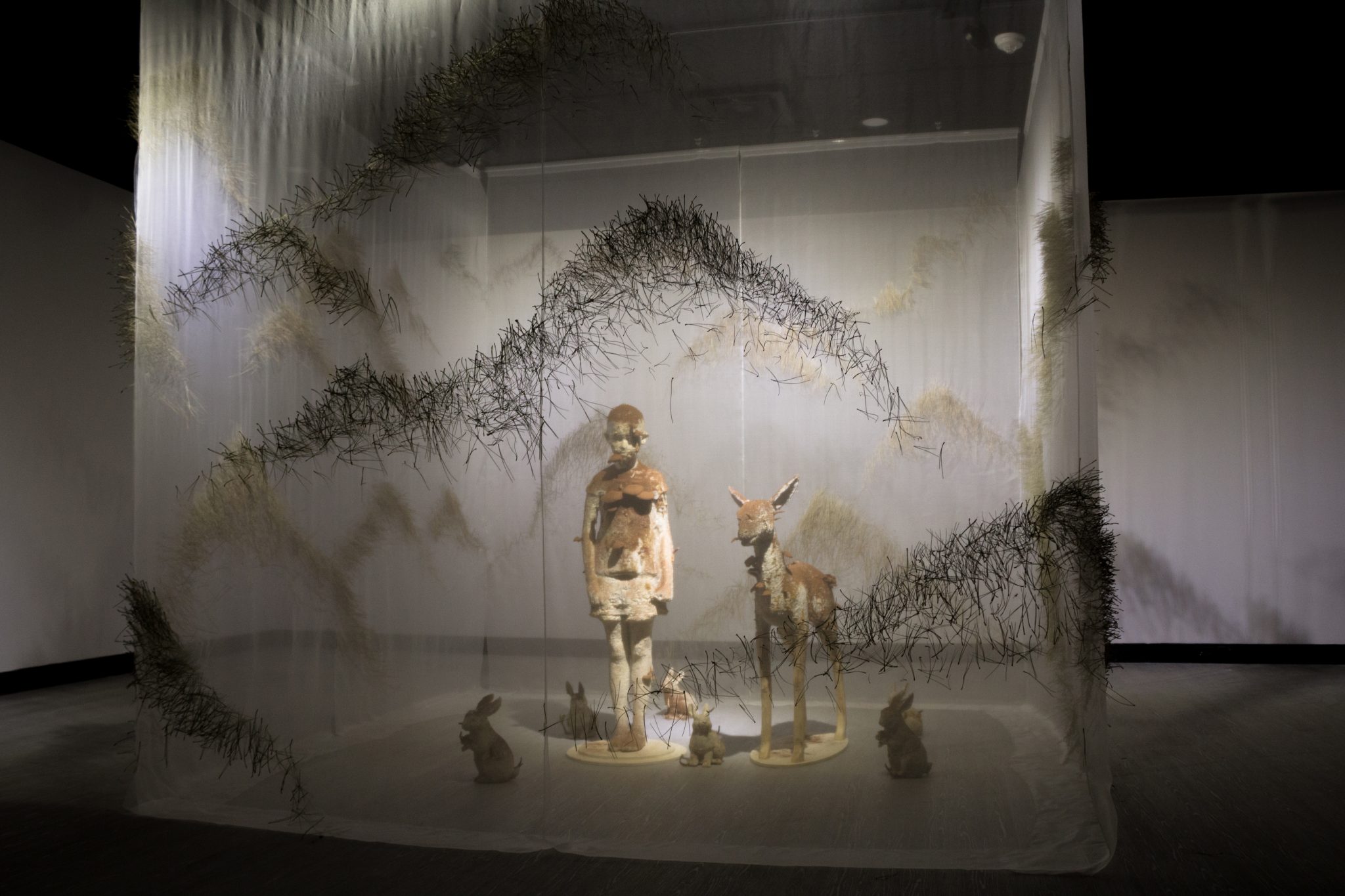Heaven and Earth art exhibit explores Chinese culture


Xiaojing Yan is a Chinese Canadian artist working and living in Markham, Ontario.
Between Jan. 7 and Feb. 8, Laurier’s Robert Langdon Art Gallery hosted Xiaojing Yan’s installation piece, Heaven and Earth.
Combining her previous works, Far From Where You Divided and Mountain of Pines, Heaven and Earth reflected a unified mixed media installation exhibit that drew upon both Chinese and Canadian culture.
The Heaven and Earth exhibit primarily consisted of silk organza, which flowed elegantly down from the gallery ceiling.
Intricately inserted into the silk were thousands of pine needles which Yan collected from the forest near her home.
The placement of the needles within the silk transformed the sheer-medium into a mystical realm of mountains and clouds.
The lights and shadows in the gallery added an additional dimension to the mixed installation exhibit.
Yan expressed that lighting is always an important element in her work, because it acts as a material of its own.
At this exhibition, in particular, the gallery lights made the silk glow, while the pine needle shadows appeared as distant misty mountains on the walls.
Not only did these shadows expand past the exhibits primary materials but the shadows became art themselves, resembling traditional Chinese watercolour paintings.
Her art is focussed between her time spent in British Columbia admiring the mountains to her childhood memories of rural China.
Amongst the silk organza stood eight sculptures in a silk enclosure. Within the silk box stood sculptures of a young child and woodland animals.
By boxing the sculptures in, it emphasized their presence within the gallery.
Yan moulded the sculptures out of a wood chip paste, which took a total of two years to complete.
She explained that the young boy along with his five animals companions is a testament to youthful imagination and cultural integrity.
Within both Western and Chinese culture, animals are often associated with fairytales and mythology.
Additionally, the young child, as well as the woodland animals within the piece, symbolized youthful curiosity.
Between the mountainous landscape, clouds, and misty shadows, the sculptures unified the three-dimensional space.
When looking closely at the sculptures one would be able to see mushrooms sprouting out of their moulds.
Yan harvested lingzhi mushrooms onto the sculptures wood chip paste in a period of five to seven months.
The mushrooms are not only on the sculptures to add another natural element to the exhibit, but the mushrooms also connected the piece back to Yan’s Chinese origins.
In Ancient China, mushrooms were believed to contain a higher level of immortality; they were seen as something that never ages or dies.
In present-day China, mushrooms still have similar connotations that surround them, including that of healing powers in modern medicine.
Overall, Heaven and Earth illustrated a combination of Yan’s Chinese culture and the one she has embraced here in Canada.
Being a migrant, Yan has encountered two different cultures in her life.
The exhibit also exemplifies how Yan has responded to the environment.
Her art is focussed between her time spent in British Columbia admiring the mountains to her childhood memories of rural China.
“I would like people to stop and think about their origin and culture,” Yan said.


